Cardamine diphylla
A small wildflower with gentle white flowers and two compound leaves
Cardamine diphylla crinkleroot
Add to MyPlants View Locations
This is one of three species of perennial toothwort that grow in our state during the spring. The more common cut-leaf toothwort (Cardamine concatenata) has 3 deeply cut leaves that emerge horizontally from the side of the stem. The two-leaved toothwort the plant has a pair of (rather than three) stem leaves that are nearly opposite on the stem. Each leaf is deeply divided and toothed, but not as deeply cut as those of the cut-leaf toothwort. The basal leaves are of similar shape. The flowers are white but fade to pink with age. They have four petals which - typical of the mustard family.
This species grows 8-14 inches tall and, like the other toothworts, it grows in moist woods. The name toothwort comes from the tooth-like projections on the root. This species is also called pepperwort, pepperroot, twin-leaved toothwort and broad-leaved toothwort. This species is found throughout much of eastern North America where the habitat is suitable.
The Algonquin people of Quebec used the ground root mixed with vinegar to treat fevers. Various other Native American peoples used it for different medical purposes. There is no modern medical support for any of these treatments.
Habitat & Range
Grows in rich, often rocky woods and floodplains.
Mostly found in northern and western parts of the state.
Range: Grows in most of eastern North America.
| EMP: | FACU |
|---|---|
| NCNE: | FACU |
Phenology
Flowers April through June.
Characteristics
Identification Tips
Two compound leaves each with 3 leaflets
Plant Codes
S-rank: S5 (Secure)
G-rank: G5 (Secure)
Cardamine diphylla crinkleroot
Synonyms: Dentaria diphyllaAdd to MyPlants View Locations
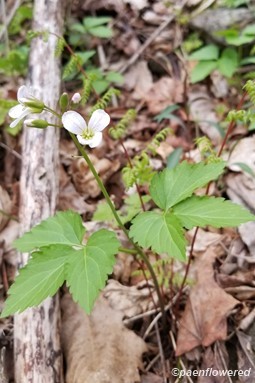
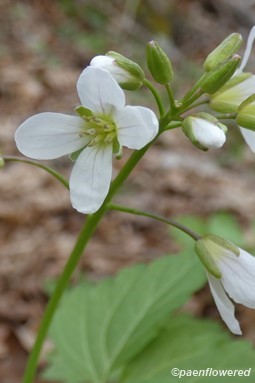
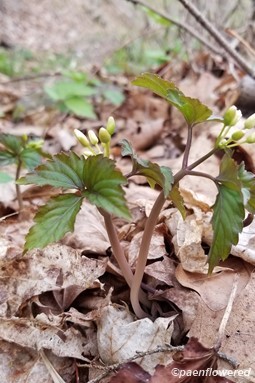
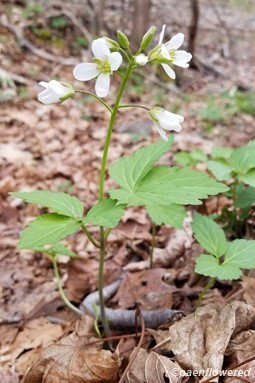
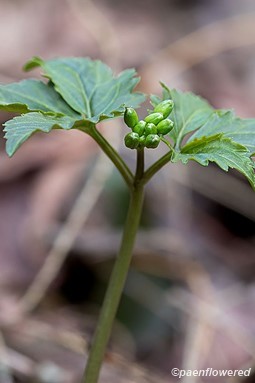
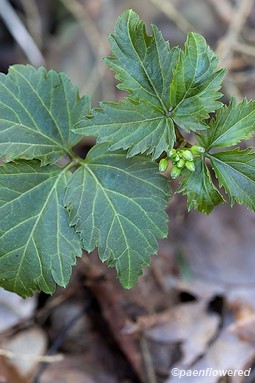
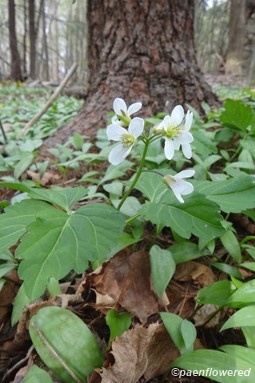
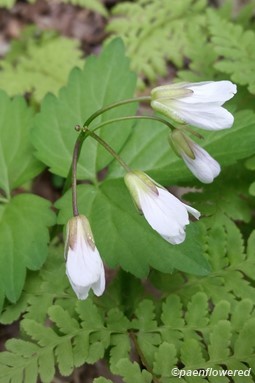
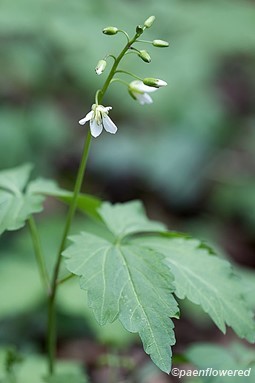
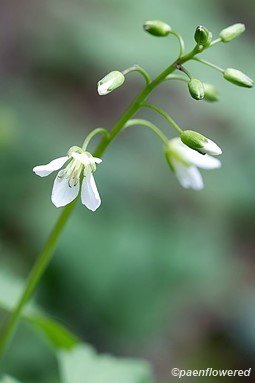










Comments
Have you spotted this plant in your area? We'd love to hear about your experience! Share your comments or questions about the plant below. Comments are moderated before posting.